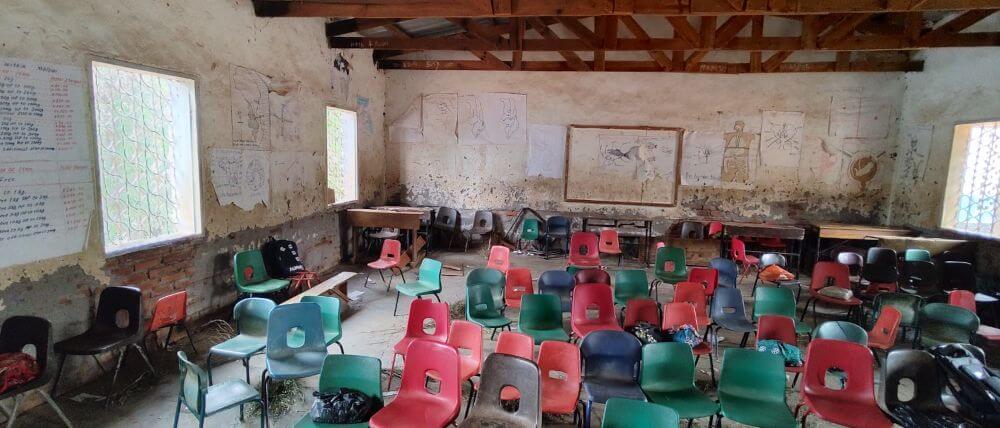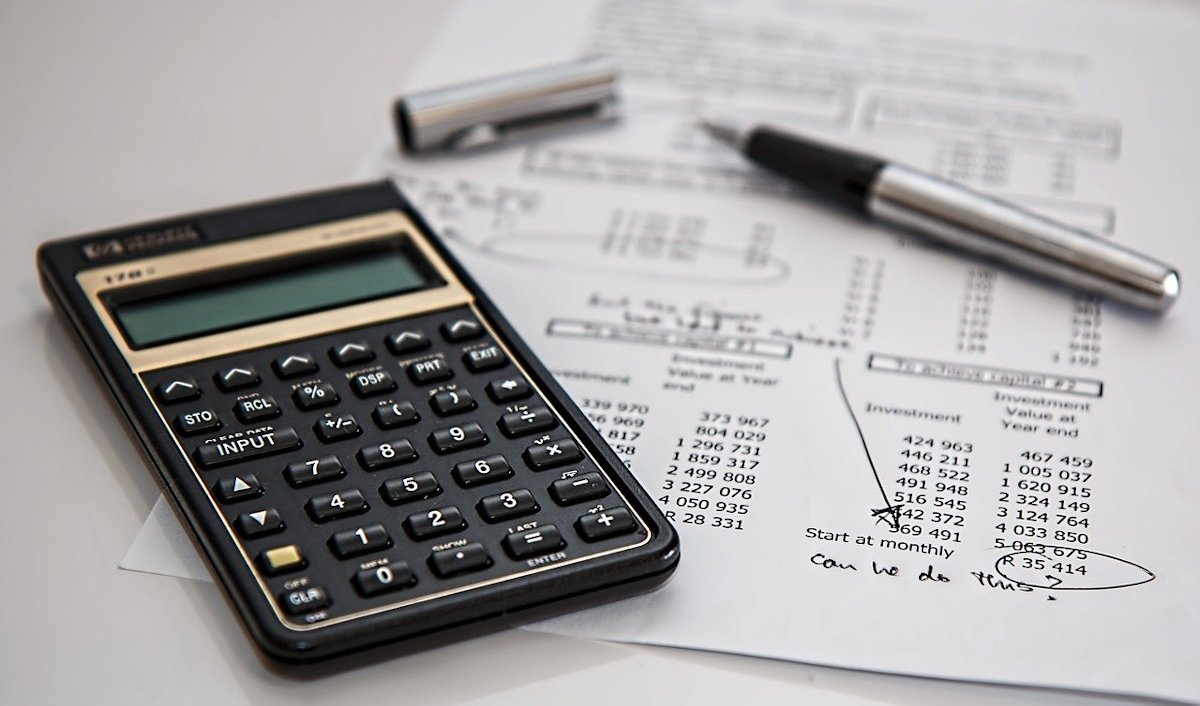CoWoCo Meets - 1964
Consultation of World Conferences
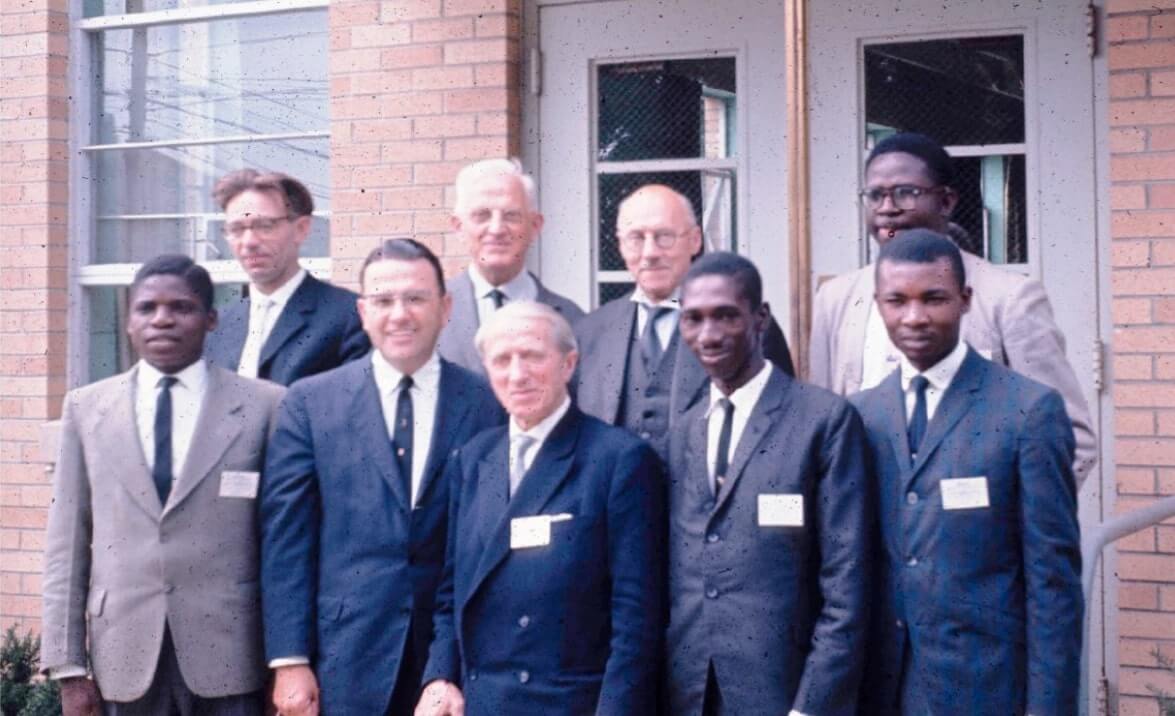
Two Seventh Day Baptists, Gerben Zijlstra of the Netherlands and Everett Harris in the United States of America (USA) had a dream of an association of Seventh Day Baptists (SDBs) around the world. Representatives from seven countries responded to the invitation from the SDB General Conference in the USA to meet with them in Salem, West Virginia, August 12-16, 1964 to talk about that dream. The meetings were called a Consultation of World Conferences (CoWoCo). It was the origin of the SDB World Federation. The delegates discussed missionary effort and cooperation on a global scale. In the report of their meetings, they said, “Mutual understanding and increased appreciation for the hopes and problems of others have been the major achievement of this first CoWoCo session.” They drafted a constitution to be submitted to the national conferences and groups who might be interested in joining the new organization.
“It is the heartfelt prayer of the undersigned delegates that this report reflects the beginning of a substantial trend toward our goal of Seventh Day Baptist unity in Christ and a vigorous witness throughout the world.”
| James McGeachy (England) | Jacob N. Tyrrell (Guyana) |
| Johannes Bahlke (Germany) | Alfred Mellmann (Germany) |
| Naval Harley (Jamaica) | Joe A. Samuels (Jamaica) |
| Otrain B. Manani (Malawi) | Gerben Zijlstra (Netherlands) |
| Rex E. Zwiebel (USA) | |
| Loren G. Osborn, chairman (USA) | |
| Alton L. Wheeler, secretary (USA) | |
Seventh Day Baptist World Federation - 1965
Charter Members
- Brazil
- Burma
- England
- Germany
- Guyana
- Jamaica
- Malawi
- Mexico
- Netherlands
- New Zealand
- United States
By the end of 1965 enough conferences had signed the constitution to declare the Seventh Day Baptist World Federation (SDBWF) established. “Charter Membership” was left open until the end of 1966. A nominating committee of Gerben Zijlstra (Netherlands), James McGeachy (England), and Rex Zwiebel (USA) prepared a ballot of officers and conferences elected them.
The first officers were President, Loren G. Osborn (USA); Vice Presidents, Otrain B. Manani (Malawi) and Joseph A. Samuels (Jamaica); General Secretary, Alton L. Wheeler (USA).
The Executive committee planned a Week of Prayer for January 1967 with a booklet of daily meditations written by Gerben Zijlstra and Everett Harris. SDBs around the world have celebrated the annual Week of Prayer the first week of January every year since then— now 49 years. Each prayer booklet has a different author who selects the Bible theme for the week. The booklets are in English, the official language of the World Federation.
General Secretary Wheeler began publication of the World Federation Newsletter and continued it as long as he was in office, until 1978. He took every opportunity in his travel for the USA Conference to make visits for the Federation as well. He, like all World Federation officers, received no money for his work. Money for travel or other expenses comes from contributions of members and friends.
1st Session — 1971 — Westerly, Rhode Island, USA
When the first official meeting of the Federation took place in 1971, delegates from nine countries gathered to focus on the theme, “Freely you have received, freely give.” (Matthew 10). They traveled 65,880 miles from Brazil, England, Germany, Guyana, Jamaica, Malawi, Netherlands, New Zealand, and the USA. India had joined the Federation in 1969, making twelve members, but delegates from Mexico, Burma, and India were unable to attend this session.
Delegates shared reports of work in their countries and brought questions for discussion, especially about SDBWF purposes: to be a unifying force for the many national groups of churches of like faith --but also to be a missionary organization? They discussed what it means to be a Seventh Day Baptist and agreed on the statement below.
They identified two projects to encourage all SDBs to help support: travel aid for the Brazil conference to send evangelists to three southern states and for the Central Africa Conference to send a worker or missionary to Northern Malawi. Some money was raised for both.
We are Seventh Day Baptists, and that very name indicates certain beliefs we hold in common:
(1) basic belief in God and Jesus Christ,
(2) the practice of baptism by immersion,
(3) observation of the seventh day of the week as the Sabbath, ordained by God,
(4) the goal of congregational polity in all member conferences/conventions, or groups.
2nd Session — 1978 — Alfred, New York, USA
Money for World Federation projects comes only through voluntary contributions from member groups and individuals as they respond to a need that is communicated.
Between the first and second sessions, besides the planned projects, SDBs responded to tragedies affecting India SDBs (a cyclone and a tidal wave that killed 22 SDB evangelists) and assisted Watson Mataka as a missionary to Kenya. General Secretary Wheeler and SDB Missionary Society Executive Leon Lawton went on a three-month, around-the-world “ambassadorial tour” to visit SDB conferences, groups and leaders in 13 countries: Korea, New Zealand, Australia, Philippines, Burma, India, Kenya, Malawi, Rhodesia, South Africa, Brazil, Guyana, Jamaica.
“Christ for the World” (2 Corinthians 4:1-5) was the theme for the 1978 session: 34 delegates and observers attended from 10 countries, including the new member conference in the Philippines. Most of them also attended the USA annual conference. A highlight was the posting of flags from 22 countries where SDBs had a witness. Country delegations led worship sessions or Bible studies.
Delegates voted to support special projects including a program to establish contact among scattered SDB churches and individuals in Europe led by Vice President Jan Lek. Church construction in Burma, England, Malawi, and South Africa were other projects on the list. As in 1971, most delegates also participated in a post-session institute in leadership and administration. New officers were elected and thanks expressed to three who had served 12 years (see list on page 14).
3rd Session — 1986 — Westerly, R.I., USA
Forty people carried the flags of 18 nations in a festive parade of flags to open the USA Conference in Worcester, Massachusetts. Delegates from all SDBWF member conferences were able to attend.
For the first time in the 20-year history of SDBWF, all member conferences had delegates at the sessions, held again in Rhode Island: 60 people attended, 34 were official delegates representing all 18 countries plus congregations in Czechoslovakia and Paraguay. Burma and India sent delegates for the first time and also three new member conferences: Poland, Nigeria, and South Africa.
Highlights of the sessions included formal reports and displays from each member conference. Worship, sermons, Bible studies and closing communion service conducted by the various delegates focused on the week’s theme: “By Means of His Power” (Ephesians 3:20-21). Major business items included the identification and priority listing of projects in the various counties which will benefit from international cooperation. For these, programs of leadership training in several conferences were given top priority among projects to be promoted by the Federation.
Delegates discussed Seventh Day Baptist beliefs and decided to have an international committee appointed to bring a draft statement of beliefs to the next sessions. Gabriel Bejjani began his 17 years as WF President, and vice presidents were added from more regions.
Delegates also attended a post-session retreat and training session at Jersey Oaks Camp, and many had opportunity to visit other churches in the USA.
4th Session — 1992 — Auckland, New Zealand
Seventh Day Baptist World Federation Purposes
To provide increased communication among Seventh Day Baptist groups around the world
To promote projects of mutual interest which will benefit from international cooperation
To stimulate fellowship among Seventh Day Baptist Christians
Australia and New Zealand SDBs hosted the first WF sessions held outside the United States. It was a long distance across the Pacific for everyone, and visa or emigration complications prevented some from attending, but 20 delegates from 10 member groups, plus an additional 10 observers, gathered in Auckland, New Zealand during the annual Week of Prayer in January 1992. Even those from Asia couldn’t attend: from India, Myanmar (formerly Burma), and the Philippines.
The theme, “Give Me This Mountain” based on Joshua 14:12 reminded participants of Caleb’s faithfulness as Moses led the Israelites to the Promised Land, and those who attended felt they had “gained many mountains.”
Acceptance of an SDB World Federation Statement of Belief that would represent all the member conferences was perhaps the most important task of this session. Much work and discussion went into its preparation. It includes sections on God, Jesus Christ, the Holy Spirit, the Bible, the Ten Commandments, Sin and Salvation, Eternal Life, the Church, Baptism, the Lord’s Supper, the Sabbath, Evangelism, and Polity. The statement has not been changed. Copies of the WF Statement of Belief may be requested from the General Secretary or seen on our website under “About Us > World Federation Statement of Beliefs”.
A budget goal of $67,700 ($13,540 to be raised annually) caused representatives to assume the task of having their own conference help with fund-raising through an annual offering. Some do it during the Week of Prayer. Delegates also asked the executive committee to consider WF structure changes that would make it easier to accomplish goals. Leon Lawton was honored for his 21 years as WF treasurer and his work with the SDB Missionary Society and Leroy Bass for his ten years as recording secretary.
5th Session —1997 — Jamaica
Over 70 people attended the WF sessions at Passley Gardens, Jamaica in July 1997. Thirty official participants from 14 different countries conducted the business, but delegates and observers alike shared in rich experiences of worship and fellowship on the theme, “Christian Certainty.”
Another theme throughout the week was youth. Many conferences reported age-related changes: younger pastors, younger conference leaders, more interest and activity on the part of young people. A seminar on youth ministry and plans for a possible Seventh Day Baptist World Youth Congress at a future session gained support.
Focus on development of more regional contacts and activities between five-year sessions led to electing vice presidents to represent seven specific geographic regions: Africa, Asia, Caribbean, Europe, North America, South America, and South Pacific.
Although visa problems still prevented travel by delegates from Andhra Pradesh, India and from Nigeria, those from the newer India group in Kerala, India were able to come plus delegates from Poland and the Philippines Convention and fraternal delegates from the Philippines Conference and from Haiti.
6th Session — 2003 — Paraná, Brazil
For the first time in its history, in February 2003, the World Federation met in a country where English is not the national language. Twenty-five delegates and 14 observers traveled to Bocaiúva do Sul, Paraná, Brazil in 2003. Also attending were as many as 50 observers from Brazil making it the largest WF session to that date. For formal presentations, a translator stood beside the presenter and translated into Portuguese, a few sentences at a time. For less structured times— like business sessions, discussions, and committee meetings— translators would sit close to individuals or small groups and act as listeners or spokesmen as needed. It worked so well that Brazil’s willingness to host the sessions again in 2017 was gratefully accepted.
“Christ Set Us Free,” the week’s theme, declared:
“Do not let yourselves be burdened again by a yoke of slavery.” As participants struggled to overcome language and cultural barriers, one person shared the feelings of many: “It was not the knowledge of our freedom in Christ that united us. It was the experience of Christ’s spirit alive among us.”
When in session, the Federation assigns delegates to committees. These, in turn, bring recommendations for the whole body to consider. Recommendations in 2003 included strengthening the Executive Committee (the officers), who meet to coordinate the work between sessions, and strengthening the role of the regional vice presidents. Recommended projects ranged from education and publishing to building and equipment for expanded outreach. Some called for shortterm service of individuals from one country to another, particularly for teachers of English and of SDB beliefs, history, and polity.
7th Session — 2008 — Wisconsin, USA
“A World Federation Session is not just a meeting. It is not just an event. It is a significant component in the all-important process of uniting Seventh Day Baptists globally, and in partnering with each other to fulfill the Great Commission.”
- General Secretary Andrew Samuels, 2015
Twice in its 50-year history, the full executive committee (all the officers including regional vice presidents) have met together faceto-face. The first time was in 2005 in White Cloud, Michigan, USA; the second was in 2011 in Milton, Wisconsin, USA. Such meetings are extremely valuable for building working relationships and for planning the work, but they are very expensive because of the cost of world travel. Since then leaders have focused on providing training and computer equipment needed for electronic communication on the Internet. Officers regularly communicate by email attaching digital copies of messages and reports, and online meetings are now conducted by computer.
Thus a training session in communication by computer was included at the 2008 WF session in Kenosha, Wisconsin. Yet there seems no substitute for the blessing of delegates and observers from six continents cheering as each flag was placed behind the podium creating a colorful backdrop for a full week’s program of praise and worship, reports and business, seminars and discussion—and always music, the true international language that all SDBs share with joy and unity, gaining inspiration from a common theme. In 2008 it was “Be Ready, Christ Is Coming” (Revelation 22:12-20).
The 40 participants (again missing delegates who could not be with them) shared the sadness of learning that the Mexico churches had decided “not to cooperate in the purposes of the Federation,” and later, similar news from Myanmar and Kerala, India. But then came the joy of accepting three new member conferences—Burundi, Kenya, and Zambia—and, since then Uganda, with expectation of a new member conference in Rwanda and a new conference in Chile. Delegates and new officers pledged themselves to increase efforts in communication and more effective fundraising, challenging each conference to tithe 10% of their income torward Federation work.
Seventh Day Baptist World Federation Officers 1965-2017
| General Secretary (Executive Secretary until 1986) |
Treasurer |
|---|---|
| Alton L. Wheeler — 1965-1978 | Everett T. Harris —1965-1978 |
| K. Duane Hurley — 1978-1981 | Leon R. Lawton — 1978-1991 |
| Dale Thorngate — 1981-2003 | Jean Lewis — 1991-1997 |
| Frits Nieuwstraten — 2003 | Luan Ellis — 1997-2008 |
| Calvin Babcock — 2004-2008 | Miriam Berg — 2008-2012 |
| Jan Lek — 2008-2013 | Gavin Fox — 2013-2017 |
| Andrew Samuels — 2014 | Garfield Miller — 2017 - |
| President | Recording Secretary |
| Loren G. Osborn — 1965-1977 | Rex Zwiebel — 1965-1978 |
| David Pearson — 1977-1979 | John D. Bevis — 1978-1982 |
| Thomas Merchant — 1979-1980 | Leroy C. Bass — 1982-1991 |
| James L. Skaggs — 1980-1986 | Joe A. Samuels — 1992-1997 |
| Gabriel Bejjani — 1986-2003 | Calvin Babcock — 1997-2000 |
| Joe A. Samuels — 2003-2008 | Andrea Davis — 2000-2008 |
| Dale Thorngate — 2008-2017 | Patty Peterson — 2008 |
| Jonas Sommer — 2017-2018 | Bethany Chroniger — 2008-2012 |
| Luciano N. de Moura — 2018- | Karen Umaña — 2012 - |
| Vice Presidents | |
| North America | |
| Joseph A. Samuels (Jamaica) — 1965-1986 | J. Paul Green — 1986-2003 |
| Andrew Samuels — 2003- 2017 | John J. Pethtel — 2017 - |
| Africa | |
| Otrain B. Manani (Malawi) — 1965-1978 | Watson Mataka (Malawi)—1978-1986 |
| Absolom K. Harawa (Malawi) — 1986-1992 | Royal Mkandawire — 1992-1997 |
| Nedd Lozani — 2008-2012 | Canaan Phiri — 2017 - |
| Asia | |
| L.S. Thanga (Burma)—1986-1992 | Sossama Philip — 1997 |
| Al Paypa (Asia) — 2003- 2017 | |
| Caribbean | |
| Prudence Robinson (Jamaica) — 1986-2003 | Ewart Caesar — 2003-2008 |
| Claudia Ferguson (Caribbean) — 2008 - | |
| Europe | |
| Jan Lek — 1978-1997, 2003-2008 | Ruth Lek — 2008-2012 |
| South America | |
| Wilson Wolf (Brazil) — 1978-1992 | Salvador Silva — 1992-1997 |
| Jose Dirceu de Andrade Cruz — 1997-2003 | Luciano N. de Moura — 2003-2008 |
| Jonas Sommer — 2008-2017 | Douglas S Machado — 2017 - |
| South Pacific | |
| Ian Ingoe — 1992-2003 | Marlo Siolo — 2008-2017 |
| SDB Missionary Society Representative on the WF Executive Committee | |
| Kirk Looper, 1991-2011 | Clinton Brown, 2011-2017 |
| Andrew Samuels — 2018 - | |
“This consultation of Seventh Day Baptists from the several conferences came into existence with the gradualness, naturalness, and quietness often associated with the acts of God among men.”
Association of Seventh Day Baptists Australia

The first Seventh Day Baptist (SDB) church in Australia was established in Bundaberg, Queensland, in 1975 after a couple contacted SDBs in America who put them in touch with SDBs in Auckland, New Zealand. Pastor and Mrs. Francis Johnson of Auckland visited them and other contacts in Australia including Sabbathkeeping Polish immigrant Stefan Kube and his wife Vicky, an SDB immigrant from the Netherlands.
The Kubes organized a church meeting in their home in Warrimoo, New South Wales (now the Sydney SDB Church) and soon other churches and fellowships organized including a Spanish-speaking church in Melbourne, Victoria, led by Pastor Joseph Alegre (from Argentina) and, more recently, a Samoan congregation led by Marlo Siolo in Brisbane, Queensland.
In 1980 the Australia churches joined with those in New Zealand to form the Australasian SDB Conference. In 1992 they jointly hosted the WF sessions in Auckland, New Zealand. At sessions in Brazil in 2003, the World Federation received the Australia Association as a separate member and in 2008 elected Pastor Marlo Siolo a regional Vice President. The Australians supported Joseph Alegre’s mission work in Argentina in the 1990s and contributed much to worldwide communications through publication of Link, edited by Stefan Kube. They sponsor national camps and leadership training between sessions and list 5 churches and 2 branch groups with 60 members and 4 pastors. Gabriel Alegre serves as Association Chairman.
Brazil Conference of Seventh Day Baptists

In 1913, six leaders of the Seventh-day Adventist conference of Brazil withdrew to form a new conference called the Seventh Day Evangelical Adventists. In 1950, after learning of the Seventh Day Baptists from churches of this faith in Germany, they revised their statutes and adopted the Seventh Day Baptist name.
In 1967, their General Assembly approved association with the SDB World Federation and have had delegates attending every session before hosting the Federation in Bocaiúva do Sul, Paraná, in 2003. Wilson Wolf, Salvador Silva, Luciano de Moura, and, currently, Jonas Sommer, have served as WF Vice Presidents for South America.
In the mid-1960s Brazil had a total membership around 1000 in the southern states: Paraná, São Paulo, Santa Catarina, and Rio Grande do Sul. A two-year World Federation project in the early 1970s provided travel assistance for traveling evangelists. Since then they have extended northward with a church established in Cerejeiras, Rondônia, in the Amazon forest in 1990. Their 2003 report listed 2,800 members; in 2008 they listed 61 churches and 10 home groups.
The Brazilians translate many SDB publications into Portuguese and supply copies to Portuguese-speaking SDBs in Mozambique, Africa. A TIME (Training in Ministry for Extension) program, with regional classes, prepares leaders for growing new groups. They have also nurtured new work in Chilé. João Teles dos Santos currently serves as conference President.
Missionary Seventh Day Baptists of Burundi
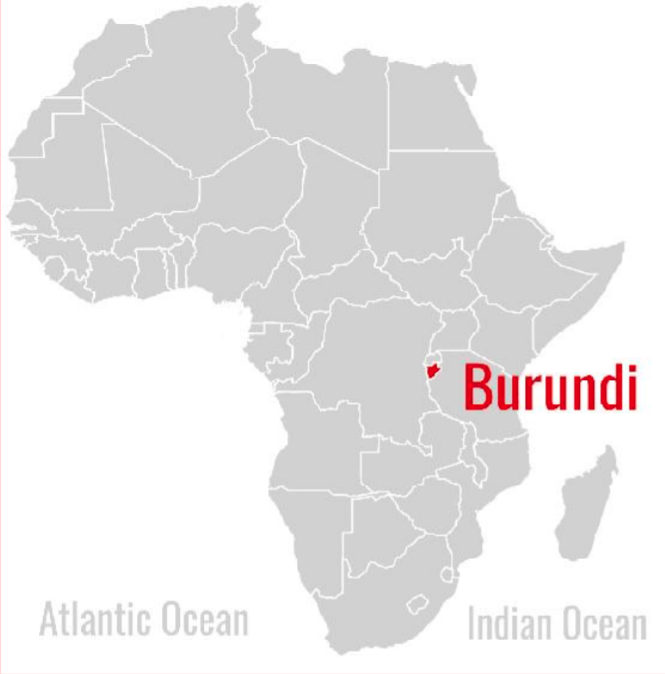
Seventh Day Baptists (SDBs) in Burundi were officially recognized by the Government in 2003 as the Association des Missionnaires Baptistes du Septème jour. In the 1990s individuals had been questioning their relationship to the Seventh-day Adventist church and by 2000 were in touch with the SDB Missionary Society in the USA; eight people began to organize the new work, voting in 2006 to apply for membership in SDBWF. When they were accepted in 2008, they reported 1420 members in 34 churches with 23 pastors, 13 of them ordained; currently 3200 members in 53 churches.
Burundi is a tiny country in East Africa with 11,000,000 people. They are one of the poorest countries partly because of the disruptions of fifteen years of civil war. Large portions of the population are widows and orphans unable to support themselves. The government puts pressure on churches not only to purchase property and build a permanent headquarters but also assist with development by building schools or health centers even when they cannot afford to purchase property and build substantial church buildings. Despite all this, SDB churches are growing. Christianity is the majority religion of the country.
In 2014 General Secretary Gilbert Nduwayo attended the conference of East African SDB leaders in Uganda along with others from Kenya and Rwanda. Besides sending missionaries to “spread out the word of God in all provinces of our country,” goals of the Burundi conference are to purchase property and build metal-roofed churches.
Seventh Day Baptists in England, UK

The very first Seventh Day Baptists started in England on the island of Great Britain, now part of the United Kingdom (UK). These Sabbathkeeping Baptists emerged about 1650, separating from the State Church of England along with other Baptists. The earliest known churches were in London and one of them, known as the Mill Yard SDB Church, continues to exist, now 360 years old. It was from England that Seventh Day Baptists spread, within the next twenty years, to America, at that time a British colony.
We know from the Mill Yard church records and the Sabbath Memorial, published by Mill Yard pastors, that the church helped SDBs grow in Europe and in other British colonies, particularly Nyasaland (now Malawi), Guyana, Jamaica, and New Zealand by sending letters, publications, and sometimes money. In the early 20th Century, the Mill Yard, London church was very small but SDB immigrants from Jamaica began to bring it alive again. Today all three churches, two in London and one in Birmingham, are made up mostly of British African Caribbean members. Each has a pastor.
In 1964, Mill Yard Church Pastor, James McGeachy, participated in the CoWoCo sessions to help organize the SDBWF, and in 1966 the three SDB groups in England, all in London, decided to organize themselves into a conference in order to join the World Federation.They sent delegates to four WF sessions. Early in this century the Federation provided short-term pastoral support to the Mill Yard Church. Owen Lynch is the current Executive Secretary.
Guyana Seventh Day Baptist Conference
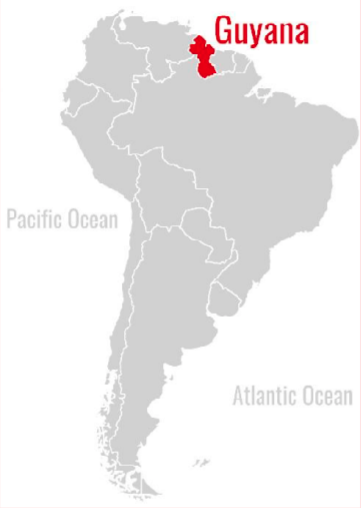
The Guyana Seventh Day Baptist Conference celebrated 100 years of SDB witness there in 2014. The work began in Guyana (at that time, British Guyana) in 1913 when 35 people established a Seventh Day Baptist church in the coastal capital city of Georgetown under the leadership of T.L.M. Spencer. He was a native of Barbados, who had served as an African Methodist Episcopal missionary in Trinidad and a Seventh-day Adventist missionary in Guyana. For about ten years he was employed by the SDB Missionary Society in the USA to develop the work in Guyana.
For short periods of time in the 1920s and 1960s several different missionaries from the USA worked with local leaders in Guyana with a goal of developing local churches and native leadership. The majority of the population lives in coastal cities and the churches are scattered there and along the many rivers which provide the main means of transportation into the forested highlands. The churches were organized into a “council” in 1948, becoming a conference in the early 1960s. Pastor Jacob Tyrrell represented them at the 1964 CoWoCo meetings to help organize the World Federation, Pastor Ewart Caesar has served as a WF`Vice President, they have had delegates at all but two sessions.
Jamaica and Guyana SDBs share conference delegates and youth camp exchanges and work together to develop churches on other Caribbean islands, recently Cayman and Trinidad. A 2011 article reported over 400 members in 11 churches. Sherlock Caesar currently serves as Conference President.
Seventh Day Baptist Conference of India

The current India conference began when B. John V. Rao (1932-1989), a former Catholic priest, joined with others to form the Telegu Mission in 1950. After contact with American SDBs in the 1960s, Rev. Rao began publishing SDB materials in the Telegu language for use in his large evangelistic meetings with an emphasis on healing. The work was centered in the east coastal city of Nellore in Andhra Pradesh, but Rao and others made evangelistic and church organizing trips to remote forest and mountain villages there and in neighboring South India states. In 1969 they joined SDBWF as the Telegu SDB Conference, reporting 87 churches with 12,000 people, these including the many people served by the mission in remote, undeveloped areas. In 1971 they established the SDB Conference of India.
Through the 1970s and 1980s SDBs around the world supported several development projects and disaster relief efforts through the India conference. Rao’s promotion of well digging to relieve droughtstricken areas drew additional aid through the Baptist World Alliance. Rao attended WF sessions in 1986 but they have been unable to send delegates since, usually because of visa or travel complications.
Since Rao’s death, his son B. Kishor Kumar has led the work with some support from the SDB Missionary Society. In 2015, Clinton Brown visited Kumar and the Nellore church as well as church groups led by Conference President Paul Chukka on the outskirts of Guntur.
Jamaica Seventh Day Baptist Conference

Seventh Day Baptist activity on the Caribbean island of Jamaica began in 1923 when churches in a disintegrating Free Adventist Conference there responded to an American SDB publication. Soon 15 churches organized the SDB Jamaican Association with native leader Louis Mignott as president. From 1927 into the 1980s American SDBs sent missionaries to Jamaica, some to work with the conference, some as principals of the SDB Crandall High School, which was built next to the church in the capital city of Kingston. The goal was to develop indigenous leaders for the American tropics.
In 1937, with over 600 members, the Jamaican SDB Conference was formed. Three young Jamaican leaders represented the Conference in 1964 at the CoWoCo sessions to initiate the World Federation. Throughout the rest of the 20th century, many Jamaicans seeking employment in other countries planted new churches and enriched the life of existing churches, particularly in the USA, England, and Canada. They established the first SDB church in Canada, pastored by Joseph Samuels, who later served as president of the USA & Canada Conference and then of the World Federation.
In 2008, Jamaica reported 35 churches and 6 fellowships with nearly 2,500 members. Projects include leadership training in Jamaica Bible Institute, developing their camp and conference center, and work with the Guyana Conference to plant churches on other Caribbean islands. Devon Levy is Conference President and Claudia Ferguson is WF Vice President for the Caribbean.
Kenya General Conference of Seventh Day Baptists
Seventh Day Baptists in Kenya date their origins to the early 1970s. The work was much encouraged by the Central Africa Conference (CAC) in Malawi which listed Kenya as a mission until 1985. In 1973 the World Federation provided travel funds for its Vice President, Otrain B. Manani from Malawi, to visit Kenya, and in 1978 for CAC delegate Watson Mataka to visit there on his way home from the WF Sessions in the USA and later to spend nine months in Kenya as a missionary from CAC. WF leaders Wheeler and Lawton had visited on their 1974 Ambassadorial Tour. A visit by Lawton and Looper in 1992 stimulated some assistance from American SDBs leading up to Kenya’s 1975 organization as a conference and application for WF membership in 2007.
They were accepted in 2008 and listed 13 churches, 3 ordained ministers and 5 unordained lay pastors, with a total membership of 1000. Current conference leader, Benard Nyakebere Mose, was elected General Secretary in 2002 after a sad time for the churches when their first three main leaders died in 1989, 1995, and 2002.
The Kenya conference holds an annual camp meeting at their main headquarters church in Kisii, in western Kenya near the Uganda border. Projects include purchase of plots for church buildings, rental of their conference office, outreach visitation to sick, poor, orphans, widows and HIV/AIDS victims and a “mobile clinical Gospel Ministry.” General Secretary Mose attended the East Africa meeting of SDB conference leaders in Uganda in 2014.
Central Africa Conference of Seventh Day Baptists

The first SDB churches in Africa resulted from the work of Joseph Booth, a British Baptist missionary, who became a Sabbath keeper and, beginning in 1898, received support from American SDBs to start an industrial mission in Nyasaland (now Malawi). Leaders of the resulting independent churches communicated with SDBs in America and England for many decades asking for assistance until in 1947 Ronald Barrar, an SDB from New Zealand, responded and began the work that resulted in a mission at Makapwa. From 1953 into the 1980s American missionaries, including David and Bettie Pearson, assisted with leadership training and development of medical and educational work.
The Central Africa Conference (CAC), officially incorporated in 1967, had representatives at the CoWoCo meetings that initiated the World Federation and at all WF sessions. Otrain Manani, Royal Mkondawire, and Nedd Lozani served as WF Vice Presidents. The CAC has initiated or encouraged SDB witness in Zimbabwe, Kenya, Zambia, and particularly in Mozambique.
In 1988, CAC reported 31 churches and 63 branch churches with 4,861 members. In 2008, Lozani reported 10,600 members: 10,000 in 140 churches in Malawi and 600 in 30 churches in Mozambique. The annual conference meets in September. The national women’s organization has regional meetings in each of the four associations. The conference operates six primary and two secondary schools, a Bible college, and four health centers.
Netherlands Seventh Day Baptist Conference

In 2017, the church in Haarlem, Holland in The Netherlands will be 140 years old. The first Dutch Seventh Day Baptist was Gerald Velthuysen, who had left the Reformed Church and founded the fourth Baptist church in the Netherlands before he read tracts about the Sabbath published by an American Seventh Day Baptist missionary in Scotland. He became convinced of the Sabbath and with twenty others formed the Haarlem Church in 1877.
The Netherlands Conference has never been large (5 churches in 1970, 3 with 60 members in 2008) but the churches have supported gospel missions in their own and other countries. Many worked in their mission in Java (a former Dutch colony now part of Indonesia) and supported SDB work in Africa. Pastor Velthuysen’s son Peter volunteered to go to Gold Coast (now Ghana) in 1901 to serve a church in Ayan Maim, but he died within months of tropical fever. Churches in Germany and Poland benefited from friendship of the Dutch SDBs, particularly in times of political and economic crises.
Gerben Zijlstra of the Netherlands was one of two credited with first promoting the idea of a world organization of SDBs. He represented Netherlands SDBs at CoWoCo and they have had representatives at all WF sessions since. In 1986, Jan Lek was elected Vice President and European Contact Person and for a period of time published The Link, a newsletter in English, Dutch, and German. In the 1980s he arranged relief shipments to Poland SDBs during their time of political and economic crises. He served as WF General Secretary from 2008 to 2013.
New Zealand Seventh Day Baptist Churches
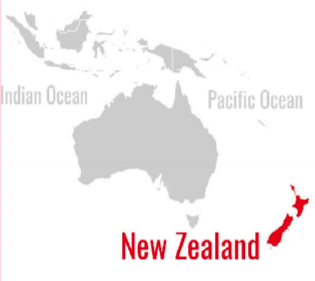
The first Seventh Day Baptist churches in the South Pacific began from Bible study classes of Sabbathkeepers who had left the Seventhday Adventists in New Zealand. After study of SDB beliefs, they organized into a church in Auckland on the north island (1940) with Edward Johnson as pastor and in Christ Church on the south island (1943) with Edward Barrar as pastor. Both churches were in fellowship with the USA conference. Johnson attended the first WF session in 1971, Barrar the second in 1978.
New Zealand SDBs have reached far into the world to support leaders of work in south India and Nigeria, and in 1947 Ronald Barrar answered the call of pastors in Nyasaland (now Malawi) to move there to organize a more active witness. New Zealand nurtured contacts and groups in Australia as churches developed to join with the two New Zealand churches in 1980 as the Australasian SDB Conference. In 1989 the Conference and the USA Missionary Society jointly commissioned Ian & Trudy Ingoe to assist the Central Africa Conference in a building ministry in Malawi.
In 1992 the Australasian Conference hosted the 4th Session of the World Federation in Auckland. Ian Ingoe was elected WF Vice President for the South Pacific. In 2003, the Australian churches joined the Federation as a separate Association. The New Zealand churches continue to support church and educational work in Malawi, but not through the Central Africa Conference. Ingoe, now pastor of a second church in Auckland, is the current contact person for the New Zealand churches.
Nigeria General Conference of Seventh Day Baptists

Nigeria is the only West African country currently relating to the SDB World Federation. In the early 1950s, letters to American Seventh Day Baptists from Nigeria reported formation of an SDB church of 142 people after receiving SDB tracts from London and America. Correspondence continued periodically and Leon Lawton, then executive of the SDB Missionary Society, visited in 1980.
The Nigeria General Conference of Seventh Day Baptists became a member of the World Federation after mail balloting in May 1983. They listed 11 churches with 1500 members. The majority were in Eastern Nigeria with some in the far north and the west. Leader at that time was Gershon Harrison of Umuahia in Imo State. He represented the conference at the 1986 World Federation sessions in Rhode Island, USA. After his death, Lawrence Uchegbuonu became the leader and represented the conference at the 1992 sessions in New Zealand.
Communication with Nigeria has been sporadic and visits limited, often because of social and political complications. Visa problems have sometimes prevented delegates from attending WF sessions. Godfrey Chinwenmeri Achor became the contact person after Uchegbuonu’s death. He currently serves as President and Osah C. Frank as General Secretary. They and others hope to attend the 2017 WF sessions in Brazil. Nigeria currently reports 45 churches with 2,590 members.
United SDB Churches in the Philippines

Soon after WF General Secretary Alton Wheeler and Leon Lawton visited contacts in the Philippines on their 1974 Ambassadorial Tour, the SDB Philippine Conference was organized and became a member of the World Federation in 1978. Centered in Cebu, the conference included churches in the Visayas (Central Islands) and the large southern island of Mindanao. They were represented by the president, E. O. Ferraren, at the 1978 Sessions.
From 1979 to 1985, Rodney and Camille Henry served as American missionaries to the Philippines and developed a program of pastoral training eventually called TIME (Training in Ministry and Extension). Bi-vocational pastors did supervised home study and attended training seminars. In 1981, following a division in the original conference, a new SDB Philippine Convention was organized. One of its leaders, Eleazar Paypa became responsible for the TIME program. He represented the convention at WF sessions in 1986 (reporting 12 churches with 193 members) and in 1992.
Following Paypa’s death in 1997, his son Al B. Paypa became the convention leader, TIME director, and delegate to the WF sessions in 1997, 2003, and 2008. He serves as WF Vice President for Asia. In 2008 he reported 22 churches and 5 new groups. With a view to unifying the work of the Convention and the original Conference, the Convention reorganized as the United SDB Churches. Currently, joint leaders’ meetings foster fellowship and explore ways they can work together. United Churches president is Zosimo Marcelo; secretary, Mary Jane Pacong.
Sabbath Day Christian Church of Poland

Bronislaw Ciesielski dated the beginning of Sabbathkeeping Baptists in Poland with a separation in 1933 from the Seventh-day Adventists. At their 50th anniversary in 1983, during the annual conference in Warsaw, their president said, “The history of our Church is not very long but hard. The 2nd World War delivered to our Church great losses. In 1949…there were only ten persons and no material resources or exterior support…”
Earlier names for the group were Fellowship of Independent Seventhday Adventist Churches and in 1936 United Seventh Day Evangelical Christians. The current name was adopted and registered with the government in 1961 just before Gerben Zijlstra of the Netherlands conference began visiting and renewing contact with SDBs. WF Vice President and European Contact Person Jan Lek began visiting them in 1980 and in 1982, during Poland’s political and economic crisis, he transported many relief supplies in the name of SDBs around the world. A major means of outreach for these churches, scattered throughout Poland, was their publishing work, aided in the 1980s by contributions from SDBs in several countries.
In 1984, Poland was accepted into the World Federation and General Secretary Dale Thorngate officially welcomed them during the annual conference in Bydgoszcz. In 1988 they reported 11 churches with a total membership of 455; in 1997, 19 churches and 6 small groups. Ciesielski represented them at the 1986 WF Sessions and Pawel Bujok in 1992 and 1997. Current contact person is Robert Cyganik.
Seventh Day Baptist Conference, South Africa
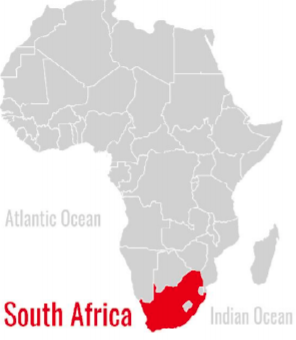
Seventh Day Baptists in South Africa celebrated 100 years in 2006, tracing their origins to the church of William Olifan, a Baptist who came to the Sabbath probably through the work of Joseph Booth who was then living in South Africa while training pastors for churches in Nyasaland/Malawi. There was little communication between South African SDBs and others until the 1960s. WF General Secretary Alton Wheeler and Leon Lawton renewed contact on their 1974 world tour.
In 1986 the SDB Conference of South Africa joined the World Federation, reporting 253 members in Port Elizabeth, Uitenhage, and Ntabankulu churches plus other groups. Their president, Nyaniso James Siwani, and general secretary, Elspeth Mazomba, attended the 1986 WF sessions. Siwani again represented them in 1992, 1997, and 2003. In 1995 the SDB Historical Society, in cooperation with the South Africa Conference, published Siwani’s book, The Unknown Made Known: A History of Sabbathkeepers in South Africa.
As WF Vice President for Africa, Siwani published a newsletter, the Voice of Africa, and promoted the idea of an SDB Africa General Conference. Four meetings were held: 1992 in Malawi with representatives from Mozambique, Zimbabwe, Zambia, and South Africa; South Africa in 1994; Zimbabwe in 1996; and South Africa in 2001. Travel costs prevented further meetings. In 1996 Siwani traveled to Ghana and reported on visits with Pastors Acquah and Tetteh in Accra. He continues as president with Mazaleni MfundisiSchaap as general secretary.
Uganda Conference of Seventh Day Baptists

Uganda is the newest conference in the World Federation, accepted by ballot vote of members in 2016. Below are excerpts from their application form.
“The very first Seventh Day Baptist in Uganda was Brother Elie Nduwayesu who had come as a refugee from Rwanda during the genocide in 1994. He left Uganda after the war but the SDB message remained in Uganda. We started worship with challenges from Adventists who felt the Sabbath belonged to them alone. We worshiped in homes for some time till a church in Kampala was organized, but rent failed us as we did not have our own structure. From 2001 we moved on struggling.
“In 2006 we resolved to write and ask to be part of the World Federation of the Seventh Day Baptist church. We worked together with the Missionary Society and Brother Kirk Looper who visited in Uganda.…We want to…move together with the rest of the world as a people of the covenant.” Current statistics: 11 churches and 10 cell groups, 6 ordained ministers, 3 unordained; 239 members.
“Most of our churches have grown from home cells to organized churches…. Every Sabbath, in the entire conference we attend to over 1,500 children.” The conference operates three schools: Maranatha SDB Junior School, Nakanyonyi Project SDB Orphanage/ Elementary School, and Bishop Brown Vocational and High School. Uganda conference has hosted meetings of an SDB East Africa Association with leaders from Burundi, Kenya, and Rwanda attending.
Seventh Day Baptist General Conference USA & Canada
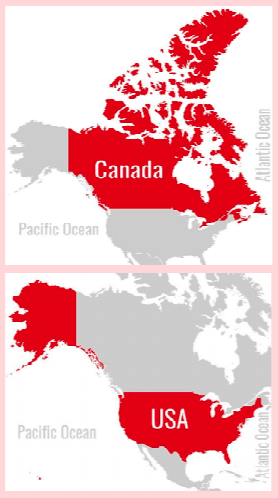
Seventh Day Baptists began in America after Stephen and Ann Mumford, an SDB couple from England, attended a Baptist church and called attention to the seventh-day Sabbath. In 1671 the first church was established in Newport, Rhode Island before the United States of America (USA) became a nation. In 1802 eight churches organized the General Conference to send missionaries westward into the new country. When the first church in Canada was organized in 1978, the conference added Canada to its name.
In the 19th century American SDBs started schools and colleges to prepare leaders and published tracts, newspapers, and Bible studies to spread the Christian Gospel and strengthen the churches.These included the Sabbath Recorder (1844) and the Helping Hand (1885). About 1850 they began international missions through the SDB Missionary Society, first in China including schools and hospitals. In the early 1900s they had missions in Africa, Jamaica, Guyana and communicated with people of like faith in other countries until the SDB World Federation began. USA hosted the WF sessions in 1971, 1978, 1986, and 2008.
Today the conference has 76 churches, several branch churches (membership, 3,500), and mission projects in many countries. Executive Director is Robert Appel. Current president is Patricia Wethington.
Conference of Seventh Day Baptist Church of Zambia

Seventh Day Baptist activity began in Zambia at least as early as the 1990s with some encouragement from the Central Africa Conference and from the SDB Missionary Society. Edwin Mukumbo was an early leader. A number of Americans visited including missions executive, Kirk Looper, Jeff Hazen on a mission project of several months, and Rodney Henry to do leadership training and assistance with organization in 2005. Zambia’s 2006 application for membership in the World Federation was accepted, like Kenya’s and Burundi’s, by mail ballot following recommendation of delegates to the 2008 sessions. It listed 18 churches with a total of 1,070 members and gave 2005 as the date of organization of the conference. Their most recent report lists 22 churches, 1,200 members, 14 pastors and 30 preparing for the ministry.
In 2010 WF Vice President for Africa, Nedd Lozani, traveled to Zambia with Lekeni George Nantikwa, Director of Christian Education and Evangelism for the Central Africa Conference, to welcome the Zambia conference into the Federation. They also did some leadership training and participated in an ordination. Lozani noted that the majority of the members were in Kitwe, Solowezi, Lusaka, and the eastern part of the country. An orphanage in Kitwe is operated by SDBs but it is an independent institution, not part of the Conference
In 2015 and 2016 the SDB Missionary Society sponsored a series of six TIME (Training in Ministry and Extension) seminars at the church in Kitwe with different teachers traveling from Jamaica, New Zealand, and the USA. The fifteen graduates will take the training to leaders in their churches and regions. Quistin Chalwe serves as General Secretary in Zambia.
Sources used in writing this booklet
Sanford, Don A., “Chapter 21, Twentieth-Century International Expansion,” in A Choosing People: The History of Seventh Day Baptists (Macon, Georgia: Mercer University Press, 2012).
Lawton, Leon R, A series of twelve 3-fold mimeographed brochures, each one on a member-conference of the SDB World Federation, most of them undated but published in the 1970s by the SDB Missionary Society, Westerly, RI, USA: Brazil, Britain, Burma, Germany, Guyana, India, Jamaica, Malawi, Mexico, Netherlands, New Zealand, Philippines.
Thorngate, Janet. “A Worldwide Witness: The World Federation’s First 20 Years,” Sabbath Recorder, January 1986, 8-11. Other Sabbath Recorder articles by Thorngate: one each month, January to September 1986 leading up to the 1986 sessions, and reports on sessions in the following issues: March 1992, November 1997, April 2003, and February 2009.
Newsletters published by the SDB World Federation: Wheeler, Alton L., editor, SDB World Federation Newsletter, 1965-1978. Thorngate, Janet, editor, Seventh Day Baptist World, 1986-2003, 2008-2016.
Pearson, David C., Seventh Day Baptists in Central Africa. 2nd Edition, 2004. (copies available in the SDB Historical Library & Archives, Janesville WI, USA)
Hill, David H., “The Development of the Seventh Day Baptist Denomination in Australia.” ca. 2002, accessed at www.Seventh-Day-Baptist.org.au in January 2011. A much shorter version, “The Seventh Day Baptist Denomination in Australia” was available at www.friendsofsabbath.org in November 2016.
Siwani, Nyaniso James, The Unknown Made Known: A History of Sabbathkeepers in South Africa. (Published by the Seventh Day Baptist Conference of South Africa and the Seventh Day Baptist Historical Society, Janesville WI, USA, 1995)
Henry, Rodney L. “A Short History of the Seventh Day Baptist Churches in the Philippines,” 2003. (An unpublished paper, SDB Historical Library & Archives)
Seventh Day Baptist World Federation Directory of Member Conferences and Churches, 1998. Earlier SDB World Federation directories are in SDB Yearbooks.
Membership applications of the SDB conferences in Burundi, Kenya, Uganda, and Zambia in SDB World Federation files, 2007-2016.
Minutes of SDB World Federation Sessions and Executive Committee, miscellaneous dates, SDB World Federation files.


